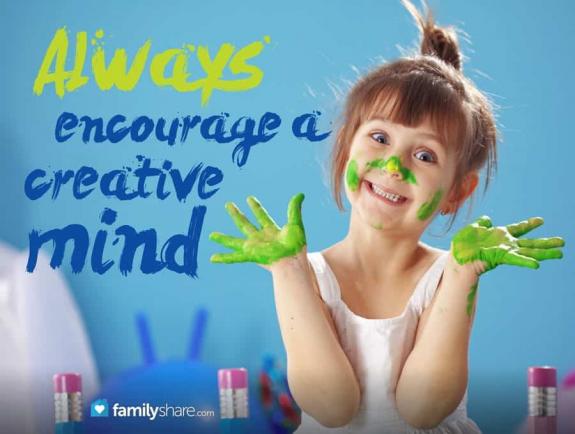
It starts with that first moment they bring you a squiggly line and ask, "Do you know what this is?"� You take your best shot, and hope to not offend them with your answer. Raising a child that is artistically inclined is a joy, but there are things to understand about you children's art that will help you to better understand them as well.
First of all, it's helpful to understand the stages of artistic development:
Scribbling Stage
- Around ages 2-4, they begin to scribble, images are indiscernible, sometimes even to them.
Pre-schematic Stage-
This usually begins around age 4. The child begins to create shapes, usually stick figures, with exaggerated parts (such as the head). Don't worry that there's only a stick in place of a body. This is normal.
Schematic Stage
-This begins around age 7 and brings new details to the human form. The child may even begin to include elements from the world around them. They are becoming more aware, and that translates onto the paper. They may also begin to incorporate perspectives into their drawings, such as distance.
Realistic Stage
- Begins around age nine. Details such as distance, shading, and more realistic coloring begin to emerge. Around age 12-13, the child may have an artistic crisis. This is the point where, depending on the criticism or encouragement they may have received, they will decide whether or not this is something they care to pursue. This is where it is critical to be encouraging, whether or not you like what they produce. Art is a wonderful outlet, and a very useful means of communication.
Again, these ages are approximate. I remember teaching a large group of 4-year-olds, and it was so much fun to watch them use their crayons on coloring sheets I'd printed off for them. One boy used only "space blue"� for everything (future astronaut). Another girl used only pinks and purples (very girlie!). Some scribbled their colors on; others were extremely detailed and meticulous. The pictures were all beautiful in their own right.
Understanding some basic color theory may also help you to determine what is going on inside your child's mind:
Yellows
oranges
and oranges generally signify cheerfulness;
Blues
greens
and greens indicate calmness;
reds
Predominate reds can, if used over and over again, be an indicator of some anger issues-not to worry if it shows up occasionally, only if it continues over time;
black
Overuse of black can indicate something missing, or an imbalance or depression. Again, this is only an indicator if it is used predominately and repeatedly. I remember a therapist telling me that my daughter was suffering depression because she had put a big black circle on a tree she drew. I casually asked her about it. "That's where the squirrel lives."� I watched her work over the next few weeks and black did not take over, so I believe her. It should only cause alarm if it becomes the focus.
If you study art, you'll know that some artists earned their notoriety by not coloring within the lines, so to speak. Your child's art is their way of expressing what is going on in their lives. Whether or not your child chooses art as a career, it is a splendid form of expression and communication that should be encouraged.
If you're wondering what to do with all of the "rewards" of your encouragement? My suggestion is to give each child their own "portfolio." No refrigerator in the world is big enough to contain all of the art a child can create!

